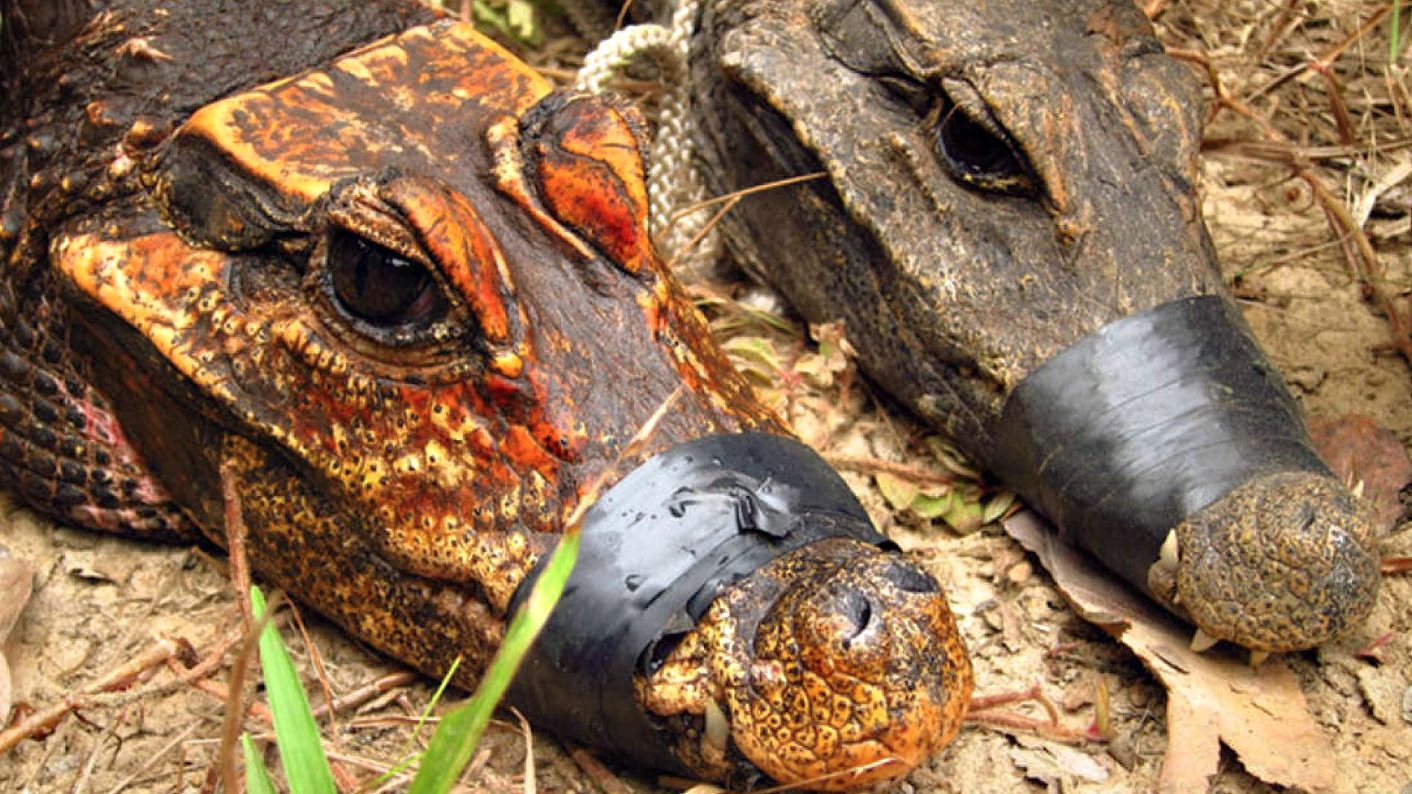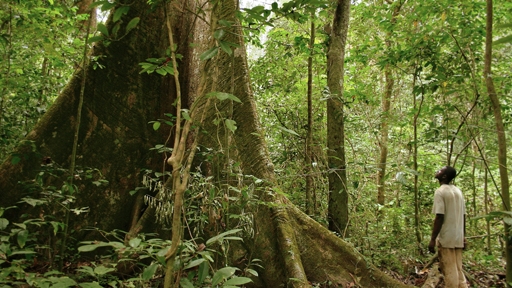
A small population of tiny orange crocodiles lives inside rainforest caves in Gabon.
Known as dwarf crocodiles (Osteolaemus tetraspis), this African species reach only an average of 4.9 feet in length and weigh between 40 and 70 pounds. Due to their small size, the majority of their protection comes from a heavily armored neck, back, and tail. They also have osteoderms (bony deposits) on their bellies and undersides of their necks.
In 2010, explorer Olivier Testa was part of expedition into Gabon’s Abanda cave system following a tip that a population of dwarf crocodiles lived there.
While some crocodile species will flee underground during times of drought, these animals are long term cave residents.

This population can remain in the caves indefinitely due to the plethora of cricket and bats that reside there, according to crocodile expert Matthew Shirley of the Rare Species Conservatory Foundation. Bats literally drop from the ceiling into the water for the world’s easiest meal.
Because of this overabundance of easy nutrition, these crocodiles are in excellent condition – even better than their forest counterparts. Despite this, the population is relatively small, likely around 50.
Experts noticed that as they went deeper into the cave, the males were more pale and brighter orange. The reason for their orange hue is not what you might expect. The unique coloration is a result of the crocodiles swimming around in the large amount of bat guano in the water. We can’t make this stuff up.

Bat guano makes the water basic, which erodes the skin and changes its color.
While these underground crocs have it made in the cave, they do need to maintain contact with the outside world during the wet season. Unfortunately, cave-dwelling crocs are unable to reproduce inside the caves.
Shirley explained to New Scientist, “It’s a nesting ecology thing: they need big mounts of rotting vegetation to lay their eggs in.”
After the wet season, the crocodiles return to the caves with their offspring.
Researchers analyzing genetic evidence have revealed that these crocs are splitting from their outdoors-dwelling relatives. These studies have shown that the cave-dwelling crocodiles stand out as an isolated genetic group, having diverted thousands of years ago.




